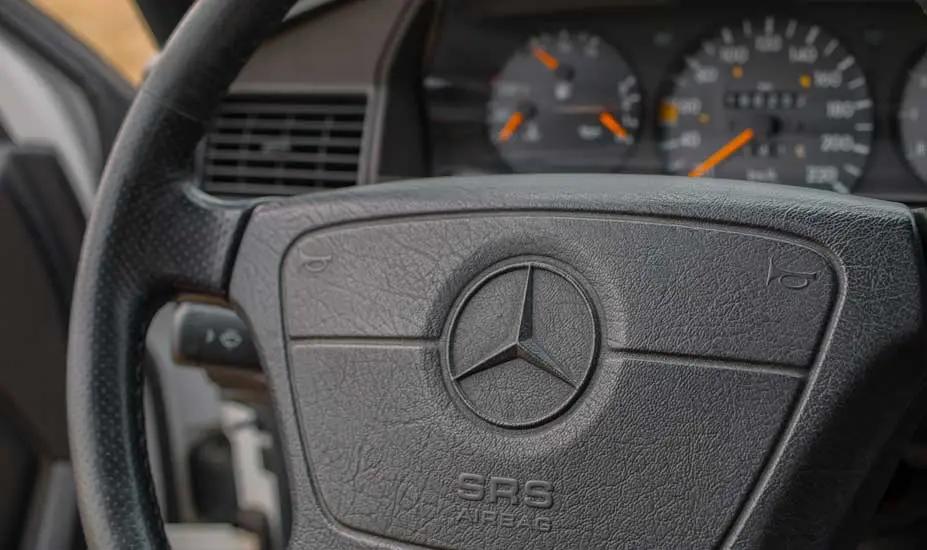
I know exactly how you feel; I was that soldier. Return to the long-term car park in the early hours, wife, two kids, and a road train of suitcases in tow. All loaded up. You turn the key and CLICK, CLICK, CLICK, Noooooo.
So, why won’t the car start after vacation? The most common cause is a flat battery. But other less common causes include:
- Loose battery cable
- Dirty battery cable
- Blown fuse
- Bad or no fuel pressure
- Coil dampness
- Coil failure
- Crankshaft sensor failure
There’s no need to panic; we’re going to find the problem and work this out right now. As said, a flat battery is the most common problem and it’s easy to fix, so we are going to start there.
Flat Battery Symptoms
First off, we need to confirm that your problem is a flat battery; you already know a soft or completely flat battery is common. If you have power in your dashboard, check for any warning messages, such as immobilizer errors.
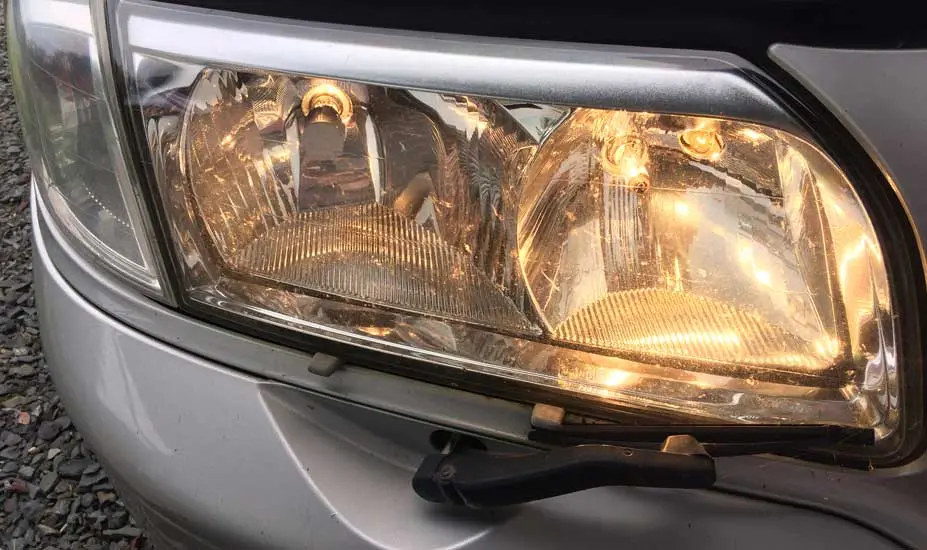
A quick way to check for a flat battery is – Turn on your car headlights and your windshield wipers at full speed. If the lights seem dim and the wipers are slow, then you can be pretty sure your battery is flat.
Check and see if you have some of these symptoms:
- Central locking doesn’t work or acts erratically
- Interior lights are dim or not working
- Dash lights look dim or not working
- Car just clicks when you turn the key
- The engine cranks over slowly but won’t start
- Radio doesn’t work
- Lights don’t work
- Wipers don’t work
Electronic components like electric steering locks sound different. If any of these symptoms seem to fit, then it’s likely you have a soft or flat battery.
A good battery is very important to all cars, especially to modern makes. All cars today have computers that help manage and run the engine and other systems efficiently.
The computers need to communicate with each other and receive data from sensors. They do so by sending and receiving codes using voltage, and so any disruption in the battery power sends things a bit crazy.
Flat Battery Fix
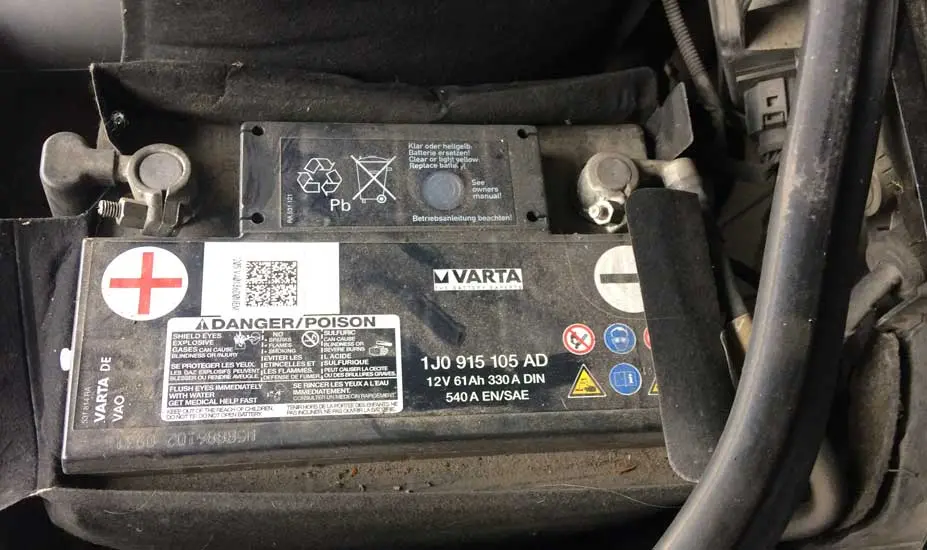
A flat battery is easy to fix, but we’ll need a set of jumper cables and a donor car. When this happened to me, it was 3 am in a deserted car park; I had to wait for about thirty minutes before a helpful fellow traveler gave me a boost.
I could have avoided this by having a booster pack in the trunk; they’re an all-in-one emergency pack that includes a booster, tire pump, and light – a real lifesaver. Check out the NOCO jump starter pack here on the Accessories page; it’s a seriously impressive tool.
Using a donor car, park as close to the location of your car battery, it’s usually under the hood, but the trunk is popular too; if you’re having trouble finding it check your driver’s manual.
Connect the donor vehicle to yours using the infographic below.

Jump starting is simple, connect the red positive (+) to the red positive and negative black (-) to the negative.
If you need a little more info on which battery terminal is which, check this post out – “Unmarked battery terminals”
Step One:
Using the picture above as a guide, put the jumper cables on in sequences 1, 2, 3, and 4. (It’s not important which car has the flat battery).
Step Two:
Start the donor car and allow it to idle for a few minutes (it helps charge your battery).
Step Three:
Start your car and leave the cables attached and your car idling for a few minutes.
Step Four:
Now with your engine running, remove the cables in reverse order 4, 3, 2, and 1.
If a clicking sound continues and the battery cables and jumper cables are making good contact, check out “Car won’t start click noise.”
Loose Battery Cable
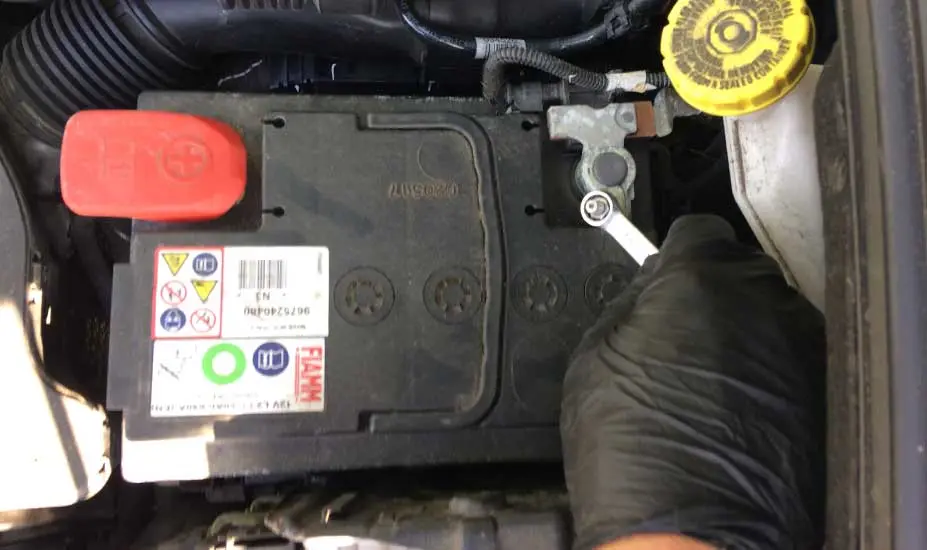
A loose battery cable is also common and easy to fix. The symptoms are identical to a flat battery.
Basically, the power cables from your battery to the car are loose, and as a result, the voltage isn’t traveling through the wires.
Driving on rough roads, car vibrations and battery hold-down clamps that are loose or missing cause the battery cables to work loose.
Loose Battery Fix
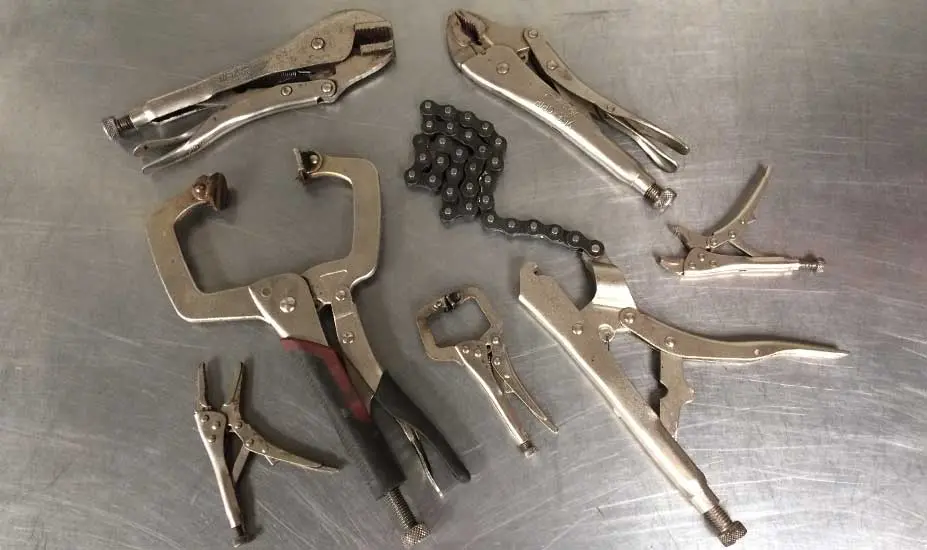
This is a matter of finding the battery, which on some cars can be a challenge; consult your driver’s manual or Google.
When you’ve located the battery cables, give them a little twist at the battery; believe it or not, that’s often enough to get the car to start.
However, they will need to be tightened up as soon as you have access to tools. A good vice grip is always a useful tool for the trunk of the car.
Dirty Battery Terminals
This is related to loose battery cables in that the dirt prevents the voltage from traveling from the battery to the battery cables. In fact, loose battery terminals tend to promote corrosion build-up.
So you may find that you have both loose and dirty terminals.
Dirty Battery Terminal Fix
This simply means removing the terminal from the battery and cleaning them using sandpaper or a wire brush.
Of course, you’ll need some tools to remove the terminal connector. You may have to improvise or ask a fellow traveler; truck owners are a good bet for tools.
Blown Fuse

A blown fuse isn’t hugely common but it is easy to check and an easy fix. For this, you won’t need any tools, but you will need the location of the fuse boxes and the actual fuse locations.
This info is usually in the driver’s manual or printed on the inside of the fuse box cover, together with a handy fuse-pulling tool.
If your car has no lights on the dashboard, wipers, and interior lights don’t work, then check the fuse reference guide for the following descriptors and check the corresponding fuse.
- Main fuse
- Ignition switch
- Instrument panel
- CEM (Central electronic module)
- ECU/ECM/PCM (Engine/power-train control unit/module)
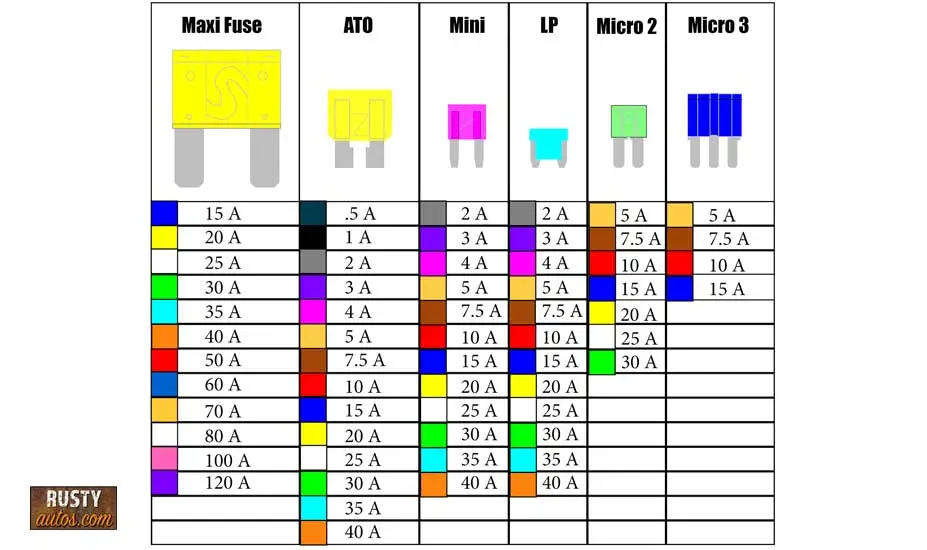
Or if your car has lights on the dash, but the engine won’t crank over, check out these fuses:
- Main fuse
- Anti-theft fuse
- Immobilizer fuse
- Ecu/Ecm/Pcm fuse
- Starter motor relay/fuse
- Ignition fuse
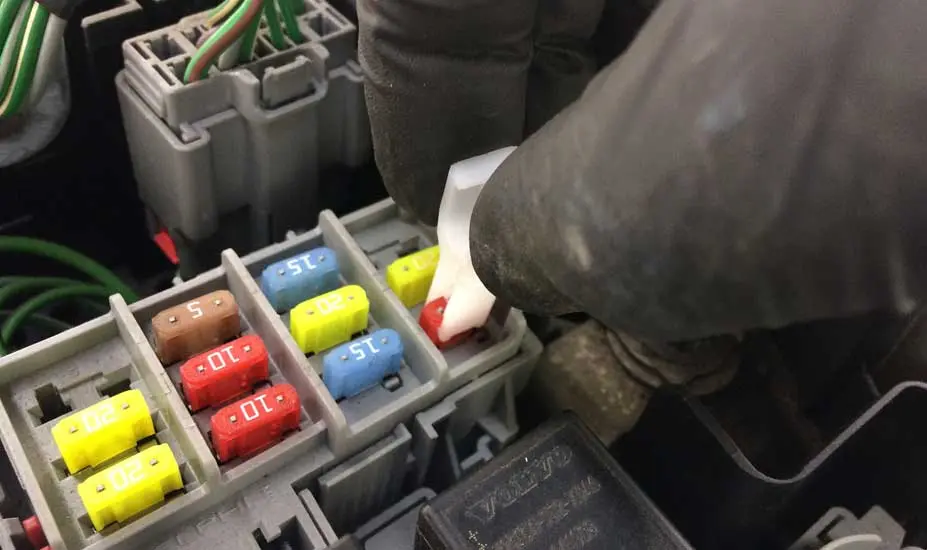
And finally, if your car ignition lights come on and the engine cranks but it won’t start, checks:
- Main fuse
- Anti-theft fuse
- Immobiliser fuse
- Ecu/Ecm/Pcm fuse
- Ignition coil fuse
- Fuel pump fuse
- Fuel injector fuse
- Car fuse box info
- Fuel Pressure
All cars today run electric fuel pumps; some will have more than one. The pump located in the fuel tank (most models) is designed to send the fuel from the back of the car where the gas tank is located to the engine.
If the fuel pump fails, the engine will crank over and over but won’t start.

Fuel pumps work hard and fails regularly. Most fuel pumps can be heard operating as the ignition key is turned to the “On position.” If you listen carefully, you should hear a consistent buzz sound from the rear of the car.
If you don’t hear any sound at all, it could be an indication of a faulty pump. If you haven’t already, go ahead and check the fuel pump fuse.
If the fuse checks out OK, turn the ignition switch to the “On” position, and try tapping the bottom of the gas tank with your fist (not something sharp). This can often shock the pump into action, and usually, when they start running, they stay running until the next key cycle.
Distributor Dampness
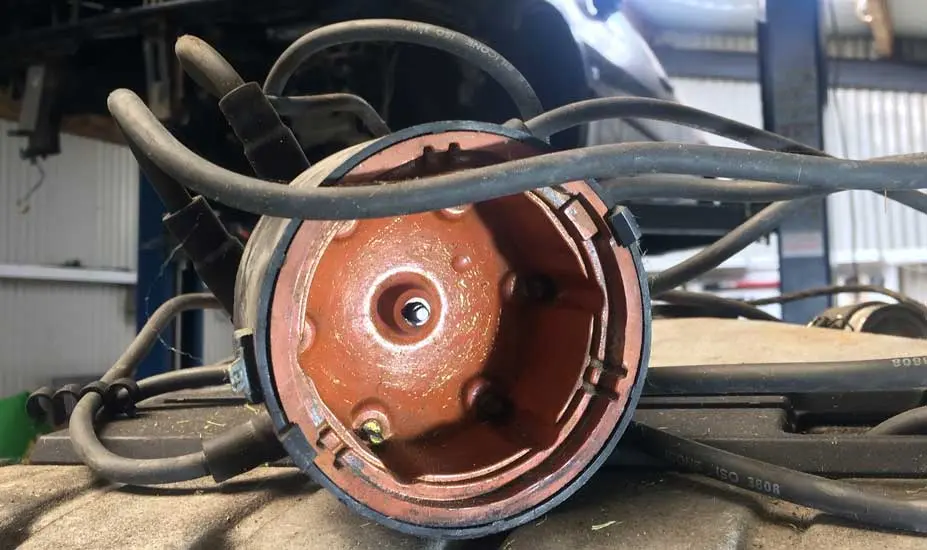
Not all cars will have a distributor, it depends on how old your car is, but dampness from laying up is common, and it usually collects in places like the distributor cap.
Most caps are easy to check; two clips and you’re in. Any dampness here will cause a no-start. Clean the inside of the cap using dry tissue, and a spray of WD40 works really well.
Coil Failure
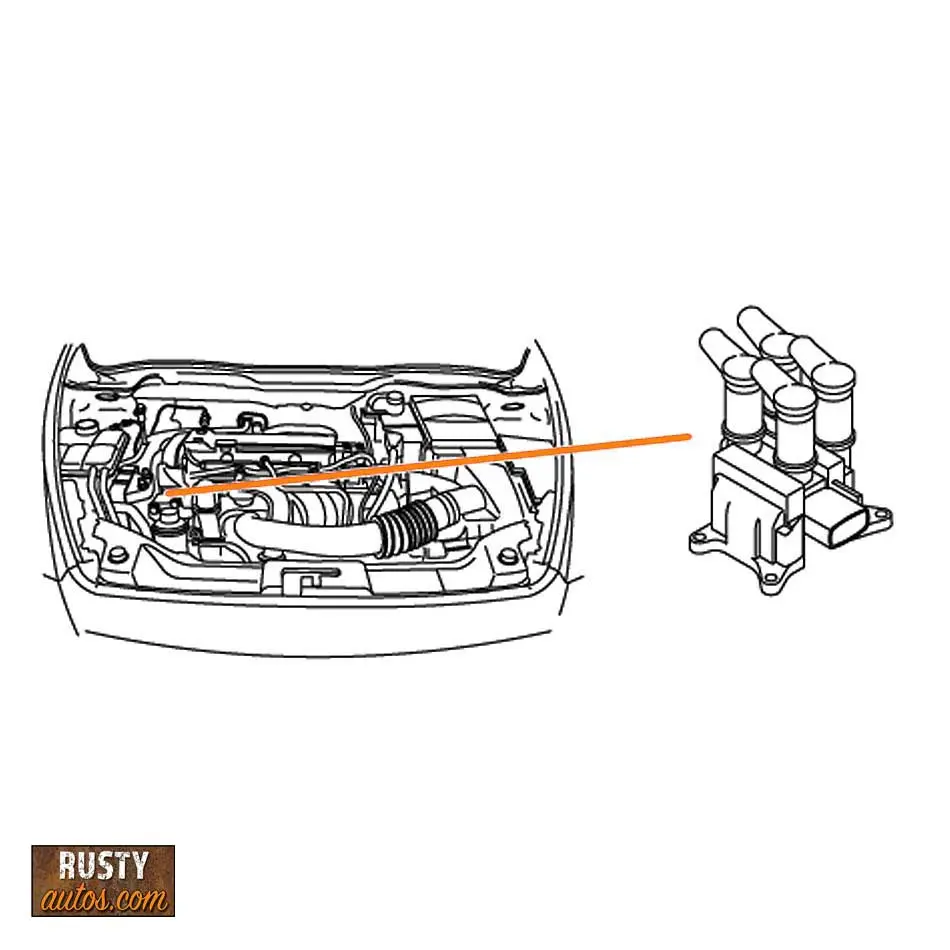
A Coil produces the spark for the spark plugs; all modern cars use computer-controlled coils. A failed coil will prevent the car from starting, but the car will still crank over.
Some cars run an individual coil for every cylinder, a coil for every two cylinders, and others have one main coil; it just depends on how old your car is and the ignition system fitted.
Symptoms will differ depending on which you have, plugs will need to be removed, or a car code reader plugged into the vehicle and the fault codes read.
Crankshaft Sensor
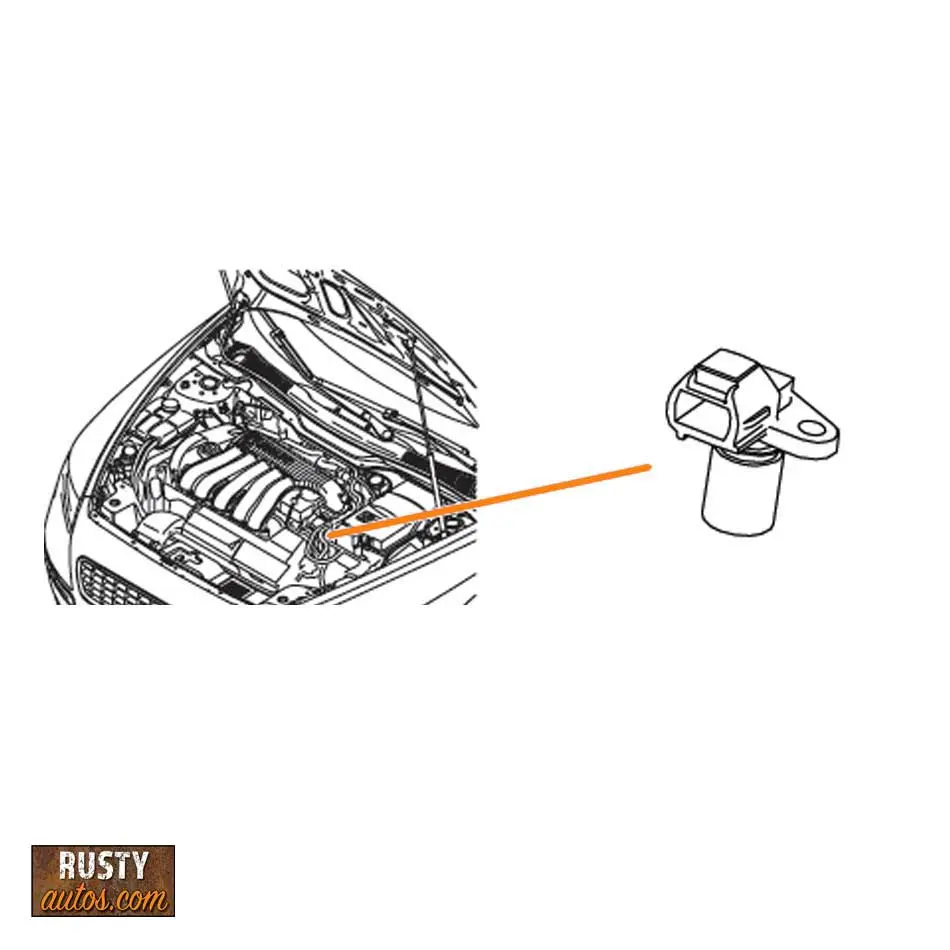
The crankshaft sensor is tasked with letting the ECU know that the engine is turning and also the location of top dead center.
This information is crucial for starting and firing the plugs at the correct time and in the correct order. If the sensor isn’t working, the car won’t start.
The CKP sensor is pretty durable but they do fail, they often suffer from heat soak meaning they fail as the engine warms up but they can also just fail without warning.
The crankshaft sensor is either located at the transmission bell housing or at the crank pulley (Harmonic balancer).
It is a small sensor pointed at the pick-up with a small plug-in wire connector. Check that the connector is in place and the wiring is undamaged.
Related Questions
What fuse would cause my car to not start? The main engine fuse, and also fuses that power the following components:
- ECM
- PCM
- ECU
- CEM
- Ignition
- Fuel pump
- Coil
- Immobiliser
About the Author
John Cunningham is a Red Seal Qualified automotive technician with over twenty-five years of experience in the field. When he’s not writing about car repair, you’ll find him in his happy place – restoring classic cars.
- About the Author
- Latest Posts
John Cunningham is an Automotive Technician and writer on Rustyautos.com. He’s been a mechanic for over twenty-five years and has worked for GM, Volvo, Volkswagen, Land Rover, and Jaguar dealerships.
John uses his know-how and experience to write fluff-free articles that help fellow gearheads with all aspects of vehicle ownership, including maintenance, repair, and troubleshooting.

